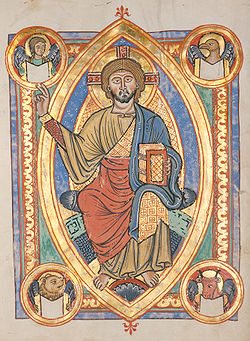Most sweet Jesus, Redeemer of the human race, look down upon us humbly prostrate before Thy altar. We are Thine, and Thine we wish to be; but, to be more surely united with Thee, behold each one of us freely consecrates himself today to Thy most Sacred Heart. Many indeed have never known Thee; many too, despising Thy precepts, have rejected Thee. Have mercy on them all, most merciful Jesus, and draw them to Thy Sacred Heart.
Be Thou King, O Lord, not only of the faithful who have never forsaken Thee, but also of the prodigal children who have abandoned Thee; grant that they may quickly return to their Father's house lest they die of wretchedness and hunger.
Be Thou King of those who are deceived by erroneous opinions, or whom discord keeps aloof, and call them back to the harbor of truth and unity of faith, so that soon there may be but one flock and one Shepherd.
Be Thou King of all those who are still involved in the darkness of idolatry or of Islamism, and refuse not to draw them into the light and kingdom of God. Turn Thine eyes of mercy towards the children of the race, once Thy chosen people: of old they called down upon themselves the Blood of the Savior; may it now descend upon them a laver of redemption and of life.
Grant, O Lord, to Thy Church assurance of freedom and immunity from harm; give peace and order to all nations, and make the earth resound from pole to pole with one cry: Praise to the divine Heart that wrought our salvation; to It be glory and honor forever. Amen.
The consecration in the encyclical entered new theological territory by consecrating non-Christians.
His empire extends not only over Catholic nations and those who, having been duly washed in the waters of holy baptism, belong of right to the Church, although erroneous opinions keep them astray, or dissent from her teaching cuts them off from her care; it comprises also all those who are deprived of the Christian faith, so that the whole human race is most truly under the power of Jesus Christ. [...] Such an act of consecration, since it can establish or draw tighter the bonds which naturally connect public affairs with God, gives to States a hope of better things.



